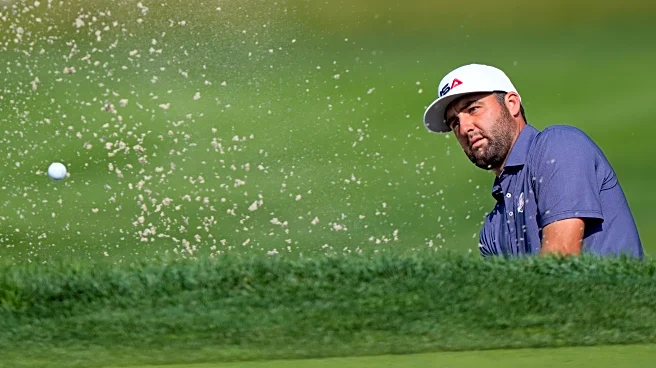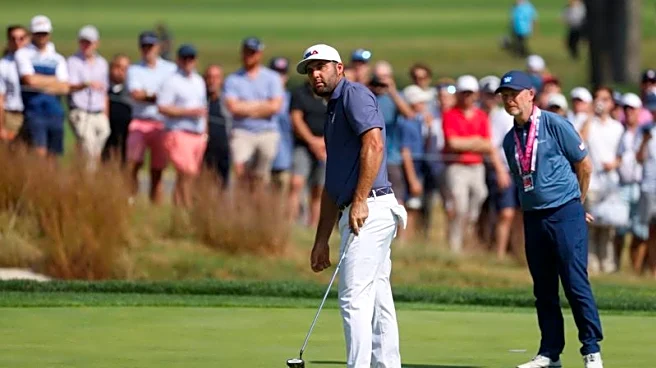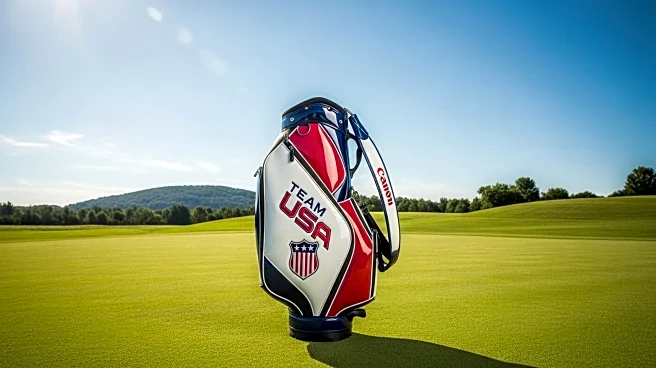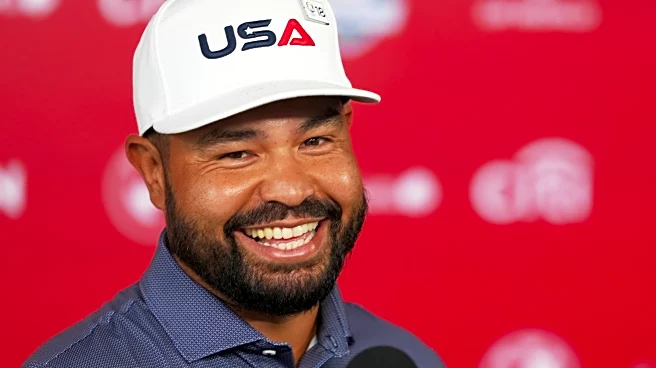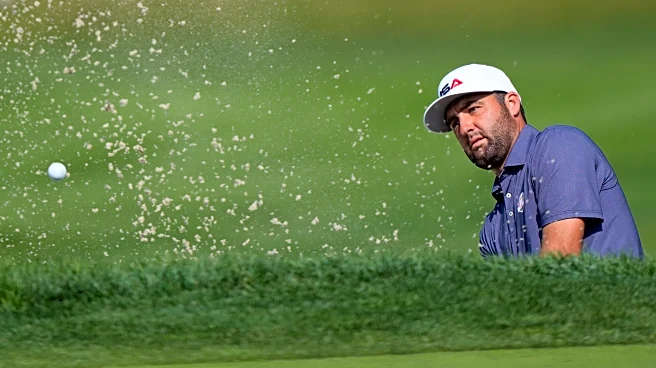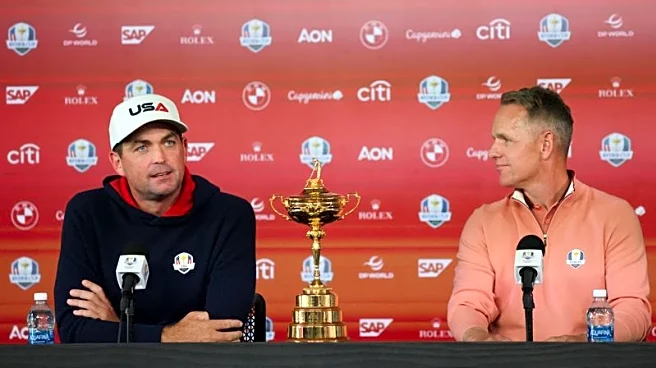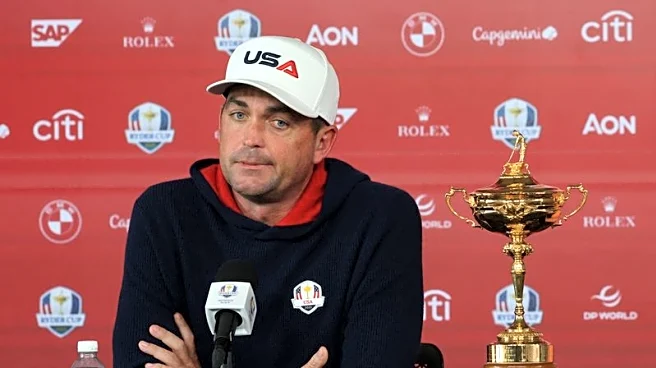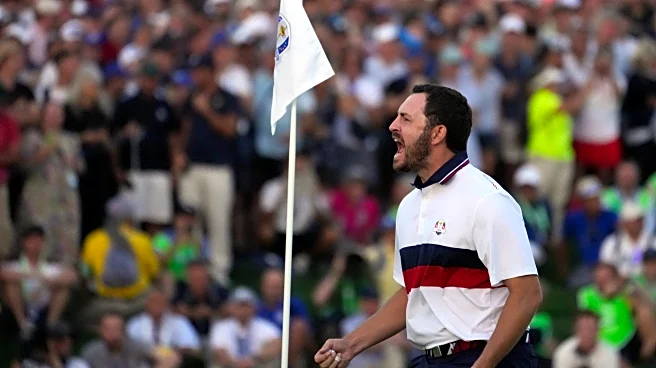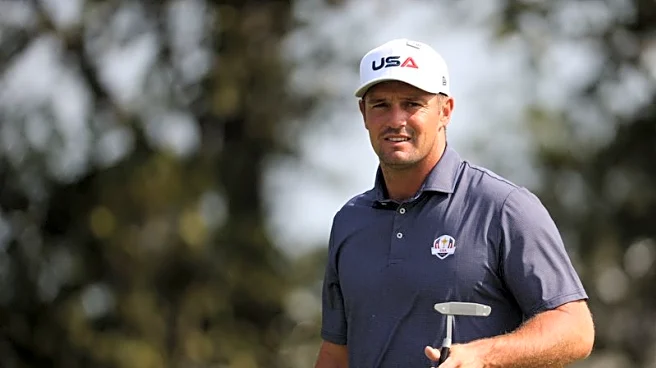What's Happening?
Patrick Cantlay, an American golfer, has addressed the 'Hatgate' controversy that emerged during the 2023 Ryder Cup. The controversy centered around Cantlay's decision not to wear a Team USA hat, which was speculated to be a protest against the lack of payment for Ryder Cup players. Cantlay clarified that the hat did not fit him at the time, and he has since worked with the team to ensure he has a suitable hat for the 2025 Ryder Cup. The PGA of America has since announced that American players will receive $500,000 for participating in the event, with $300,000 allocated for charity. Cantlay plans to donate his earnings to his personal charity. Despite the controversy, Cantlay emphasized his focus on playing the best golf and representing his country.
Why It's Important?
The resolution of the 'Hatgate' controversy highlights the ongoing discussion about compensation for athletes participating in prestigious events like the Ryder Cup. The decision by the PGA of America to compensate players reflects a shift in recognizing the financial aspects of sports participation. This move could influence future negotiations and policies regarding athlete compensation in international competitions. Additionally, Cantlay's focus on charity underscores the role of sports figures in philanthropy, potentially inspiring other athletes to contribute to charitable causes.
What's Next?
As the 2025 Ryder Cup approaches, Cantlay and his teammates are preparing to compete at Bethpage Black. The focus will be on their performance and teamwork, with the aim of securing a victory for Team USA. The event will also serve as a platform to observe how the new compensation policy impacts player motivation and team dynamics. Stakeholders, including the PGA of America and other golf organizations, will likely monitor the outcomes to assess the effectiveness of the compensation strategy.
Beyond the Headlines
The 'Hatgate' controversy and its resolution may have broader implications for athlete representation and advocacy. It raises questions about the balance between personal expression and team unity in sports. The incident also highlights the cultural significance of sports apparel and its role in identity and protest. As athletes continue to navigate these dynamics, the sports industry may see shifts in how personal branding and team representation are managed.

